Like a wrestler — yessir — learn how a WCW faction and a PE pair of sneakers foreshadowed an Ohio clique power bombing corporate America.
Two decades ago, an 18-year-old LeBron James became something most of his high school classmates couldn’t comprehend: a professional.
Although his St. Vincent-St. Mary’s peers were well aware of the otherworldly talents that’d take him to the NBA all while embarking on their own academic ascents themselves, few students stood in the same shoes.
More than a game, going pro for LeBron meant transitioning to an actual adult career — never mind creating generational wealth for his family or negotiating endorsement deals with CEOs.
LeBron was up for the challenge, he was different. So were his friends.
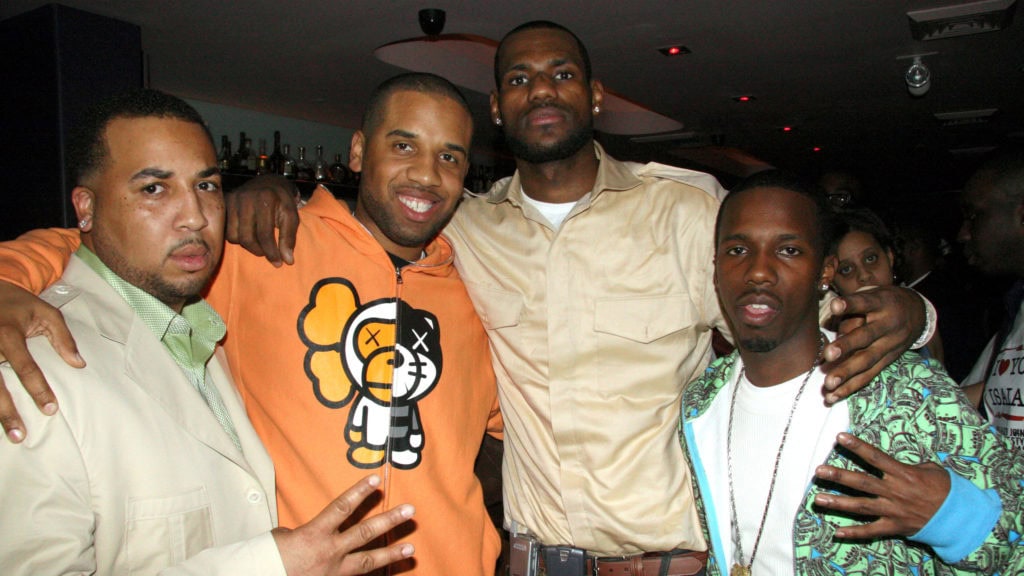
Maverick Carter, Rich Paul, and Randy Mims — all Akron or Ohio-born brothers to Bron in a friendship sense — quickly became not just unofficial family but his very official inner circle. More than that, they were his business partners.
Each old enough to drive, few old enough to drink, the quartet of kids became branded as The Four Horsemen, a nod to the professional wrestling faction famous for feuding with the old guard and always rolling together.
“They were the heels, the bad guys,” Carter told Boardroom.
To those in the professional ranks of sports, business, and entertainment, so were James and his friends.
Rather than lose loyalty or switch up, the Midwest kids protected LeBron at all costs.
Equally important, they took the power upon themselves to pave a path in each of their highly touted technical trades.
“When we first started as young black men in the sports industry? It was dominated by people that didn’t look like us or come from the same space as us,” Carter says. “Those people in the system kind of looked at us as heels. Doing it our way and saying things we shouldn’t say just because we didn’t know any better.”
Silenced by some and bad-mouthed by many, the Four Horsemen proved actions speak louder than words by making noise in what’s now a 20-year run. In the beginning, numerous namesake companies doubted them.
Early on, Nike believed.
Blessing Bron, Mav, Rich, and Mims with limited-edition Air Force 1s, the prestigious pairs were a corporate co-sign long before Springhill, Klutch, or the Uninterrupted even existed.
Released at retail for the first time ever, Boardroom dives deep into the meaning and message behind the historic sneakers.
The School of Swoosh
In the early 2000s, LeBron James did not have his own building in Beaverton.
Inside the hallowed hallways of the illustrious Nike campus, the Chosen One was only a high school hopeful on an Adidas-sponsored squad.
Although the Swoosh sent box loads of player exclusives to King James when he was merely a prince, it was not the All-American forward but rather a Western Michigan shooting guard set on changing the trajectory of the company’s storied basketball brand.
After a successful season in Kalamazoo where he started seven games as a freshman, Maverick Carter left the Bronco basketball program to take an internship at Nike.
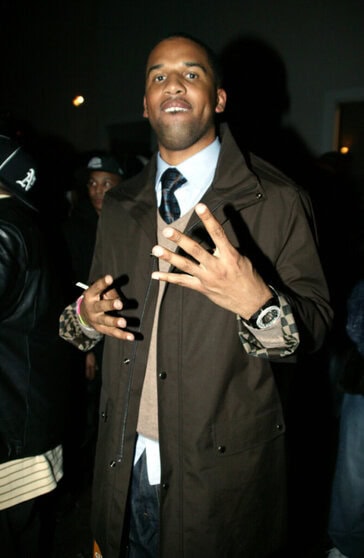
“Lynn Merritt was the key,” Carter says. “He was the one who brought me to Nike and gave me the internship. He’s the one who stewarded my experience at Nike and he’s stayed close as a mentor and a friend since leaving there.”
Leaving college life and hoop dreams behind for an Oregon office may sound bold in 2023. Trust, it was way wilder in 2001.
“When I showed up as an intern, Nike Basketball was not in good shape,” Carter says. “People don’t remember, but AND1 was kicking ass with The Mixtape Tour.”
For those deeply entrenched in hoops, this was true. In 2001, the Swoosh was still adjusting to life without Michael Jordan.
While the Beaverton brand was replacing visible Air with that of Shox, AND1 was selling shoes simply by branding trash talk and selling streetball showmanship.
The low-budget, high-personality promotion made AND1 sizzle from coast to coast.
“They didn’t have a lot of money for marketing so they created a TV show that was really dope and first of its kind,” says Carter. “AND1 was destroying everything with streetball and they created a show that worked.”
As alluded to by Carter, the streetball startup had ESPN airing a roundball reality show nationwide. Not only that, but AND1 had local legends like Rafer Alston and cultural kings like Hot Sauce touting their shoes.
Even worse for Nike? The bigger brands competing with the Swoosh had much of the NBA’s top talent at the time.
“Kobe and Tracy McGrady were at Adidas,” Carter says. “AI was at Reebok — Reebok had the NBA. It was pretty dire for Nike Basketball at the time. It seems like forever ago because they have such market dominance, but that was real and really happening.”
For the first time in years, the leaders were the followers. They sought the same streetball swagger simply because it was hot, not because it was them.
“They created Battlegrounds which was a reach,” Carter says. “It was them trying to play AND1’s game instead of doing what they do.”
In that slump season at the Swoosh, Carter got a master’s degree in marketing by not just shadowing the best but getting his feet wet when the road was rockiest.
“I learned everything I know from those days at Nike,” says Carter. “Marketing, what a brand actually is, and how big brands sign big stars to really become their partners. I tell people I graduated from Nike because I dropped out of school and that’s where I was educated.”
Although Maverick may have entered Nike Basketball when it was in a rare identity crisis, the tide soon changed. The Swoosh returned to its roots on the hardwood and flourished because of it.
In 2003, the brand bet big on hoops by buying Converse, expanding the Jordan Brand roster, and inking Mav’s main man from Akron.

“They signed LeBron, Melo, and D Wade,” says Carter. “That was a big learning lesson: watching them try to chase AND1 and then getting back to doing what they do.”
While it was the future of basketball that would soon take Nike to new levels, it was a silo from the past set to establish Carter’s crew.
’82 to Infinity
Maverick Carter was barely 20 years old when he dropped out of college to intern at Nike.
He was only a toddler when the Air Force 1 was first released.
Setting the tone for the brand’s bright future in basketball, the Bruce Kilgore-designed hiking boot-shaped hoop shoe was an absolute oddity on the market when it launched in 1982.
Premium in price, top-notch in tech, and endorsed by six NBA players, the AF1 epitomized what Nike wanted to be in the ’80s and what the brand defined in the ’90s. Oddly enough, such esteem was only the tip of the iceberg upon arrival.
Though the Air Force 1 was made to dominate defenses and bully blacktops in the ’80s, the shoe caught wildfire in the ’90s and ’00s by becoming a lifestyle staple.

Taken out of the brand’s retail rotation with the release of the Air Ship yet demanded back by consumers and store owners soon after, the Air Force 1 epitomized the aspirational yet accessible intersection of sport, street, and hip-hop culture.
In the mid to late ’90s, the Nike Air Force 1 was an if-you-know-you-know, mom-and-pop shop favorite with little to no marketing dollars behind it. Once the new millennium dawned, it was the focal point of the brand’s boom at big box retailers and boutiques alike.
Next to the Timberland 6″ Boot, it was the official footwear of hip-hop’s elite. This was true in white-on-white fashion and only amplified with colorful and rare releases.
“Back then, I remember the ‘West Indies’ Air Force 1s being a big thing,” Carter says. “I loved those because I’m from Ohio but everyone loves that New York vibe and that version of New York that represents Black people from the Caribbean. The colors were so cool, I remember seeing Jay Z rock them.”
By the 2000s, the retro roundball shoe was a billion-dollar brand by itself.

From Footaction shelves to Rap City screens, the Air Force 1 was the supreme status symbol and uniform of choice for anyone to be down.
The only way one could up their clout or credibility through footwear was by having a color code you couldn’t cop in stores.
Better yet, an exclusive embroidered pair from the powers that be at the Beaverton brand.
From Fat Joe’s candy-colored Terror Squad SKUs to Hova’s Roc-a-Fella Records renditions, a player-exclusive Air Force 1 signified a baller beyond box score status.
If you — or your crew — had your own AF1s, you were putting up numbers of a different sort or sport. Keep in mind this was all before social media metrics and the yet-to-be-digitized influence realm.
Back in the ’00s, an Air Force 1 player exclusive was the street’s stamp of approval bestowed by Nike execs themselves.
“PEs were even bigger then,” Carter says. “That’s the beauty of the Air Force 1: It’s a silhouette that takes color in terms of blocking and design that Bruce Kilgore may not have even considered then. You can make it so beautiful in so many ways that were dope. All the record label ones? I thought they were amazing.”
In unreleased Air Force 1s, Nike stamped sets and trendsetters in a manner that didn’t have to register at retail but solidified someone in culture.
To fans of fashion and hip-hop, the AF1 was a flag to wave for those that were doing things their own way. The ante was upped when embellished as exclusives for those recognized by the brand.

“The best part was not just the colors and logos, but more importantly, it was the stories,” says Carter. “It was Nike at its best: taking a great product with a great story and bringing it to life with a great athlete or a great individual. That’s where you have a real important emotional relationship with the story.”
Shortly after Maverick’s intern arrival and LeBron’s signing, Nike’s appreciation for Carter and his crew would begin to blossom.
It’d take the business world at large longer to see the vision, but insiders at the Swoosh saw it almost immediately.
Footwear’s Figure Four
In the summer of 2003, 18-year-old LeBron James declared for the NBA Draft.
Going pro in all senses, he turned down a slew of lucrative sneaker offers from Reebok and Adidas to take his talents at Nike. Already in Beaverton was friend and fellow Horsemen, Maverick Carter, as was a nearly $90 million endorsement deal and a massive amount of expectations.
A signature star since Day 1, Nike enlisted Aaron Cooper, Tinker Hatfield, and Eric Avar to design the Nike Air Zoom Generation for James to wear his entire rookie season.

Making good on Nike’s return to the script of selling stars and building brands, they doubled down on LeBron from a lifestyle lens by breaking out Bernie Mac commercials, co-branded corduroy tracksuits, and a retail range of Air Force 1s.
While each ingredient added to LeBron looming larger-than-life on TV and in the malls, a nod to his set showed that the brand’s belief was more than just marketing. In fact, it was in elevating LeBron’s teammates that didn’t have NBA All-Star selections in their future or laced up for the Cavs.
Paying homage to Carter, James, Paul, and Mims, Nike produced PE pairs of the Air Force 1 for each of the Four Horsemen.
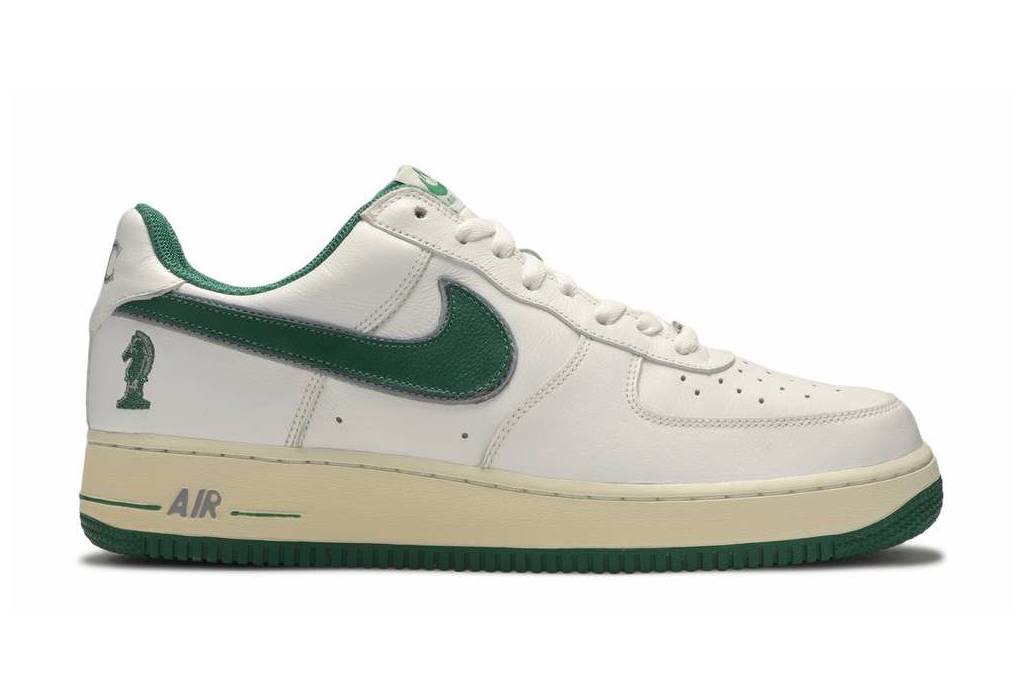
Styled in shades shedding light on the quartet’s still blossoming story, each member’s first initial appeared on the heel tab. Illustrating that the clique was playing chess, not checkers, a knight piece was embroidered on the back panel where a locale’s flag or record label’s logo would typically appear.
Said shoes were never meant to release at retail. However, they were intended to send a message to the King’s clique and all who questioned the confidence with which they moved.
“For Nike to do that was a moment of us coming out of the shadows,” Carter says. “Not just being everyone’s heel, but really being respected and understood by a big company. Nike was one of the first companies, if not the first, to embrace us as people and not just as LeBron’s friends.”
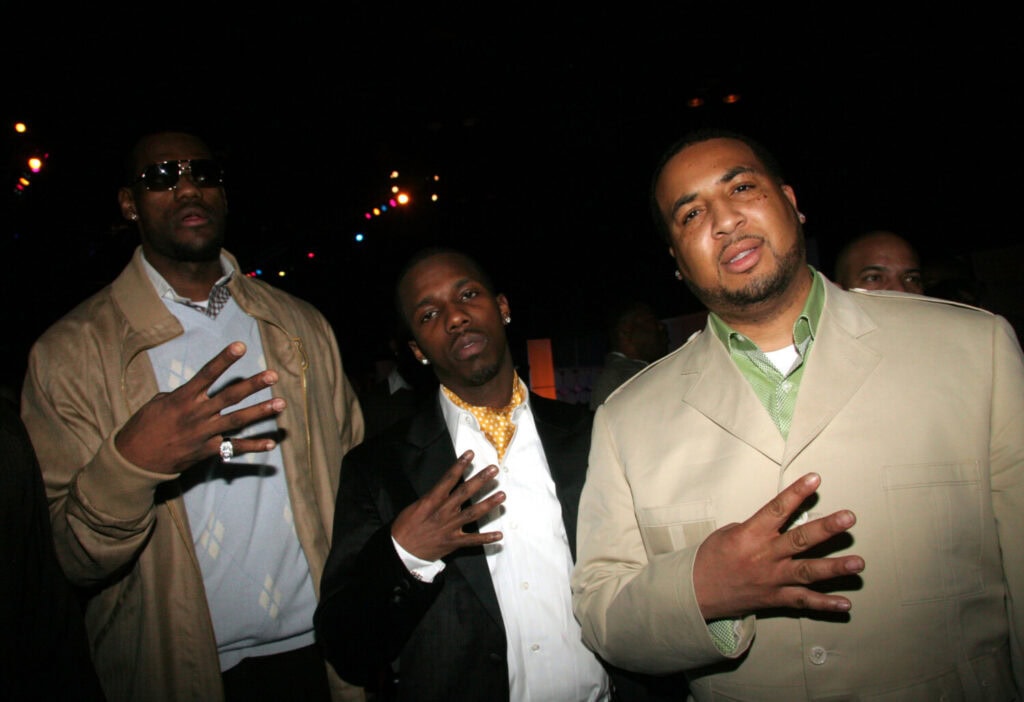
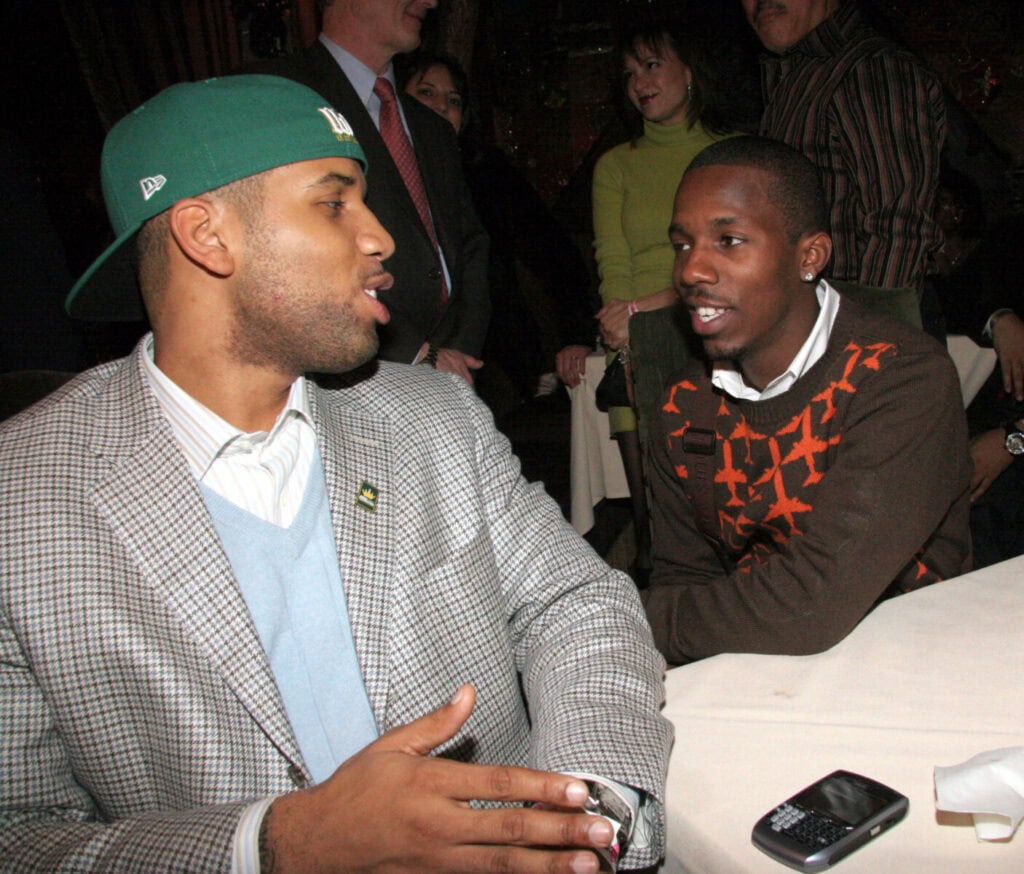
Keep in mind that in the early ’00s, LeBron was not the NBA’s all-time scoring leader. Maverick Carter did not have a production company, Rich Paul did not have an athlete agency, and Randy Mims moved even more discretely than he does now.
Being branded by Nike meant the world to the kids famous for throwing up four fingers in every photo opp while staying 10 toes down at every turn. Although the corporate co-sign would’ve stirred excitement for the friends on a Dri-Fit shirt or set of Baller Bands, it meant everything to happen on an Air Force 1.
“To be able to do it on that silhouette that we all grew up wearing and watched the dope boys in our neighborhood have on? To see us have our own version was a big deal,” says Carter.
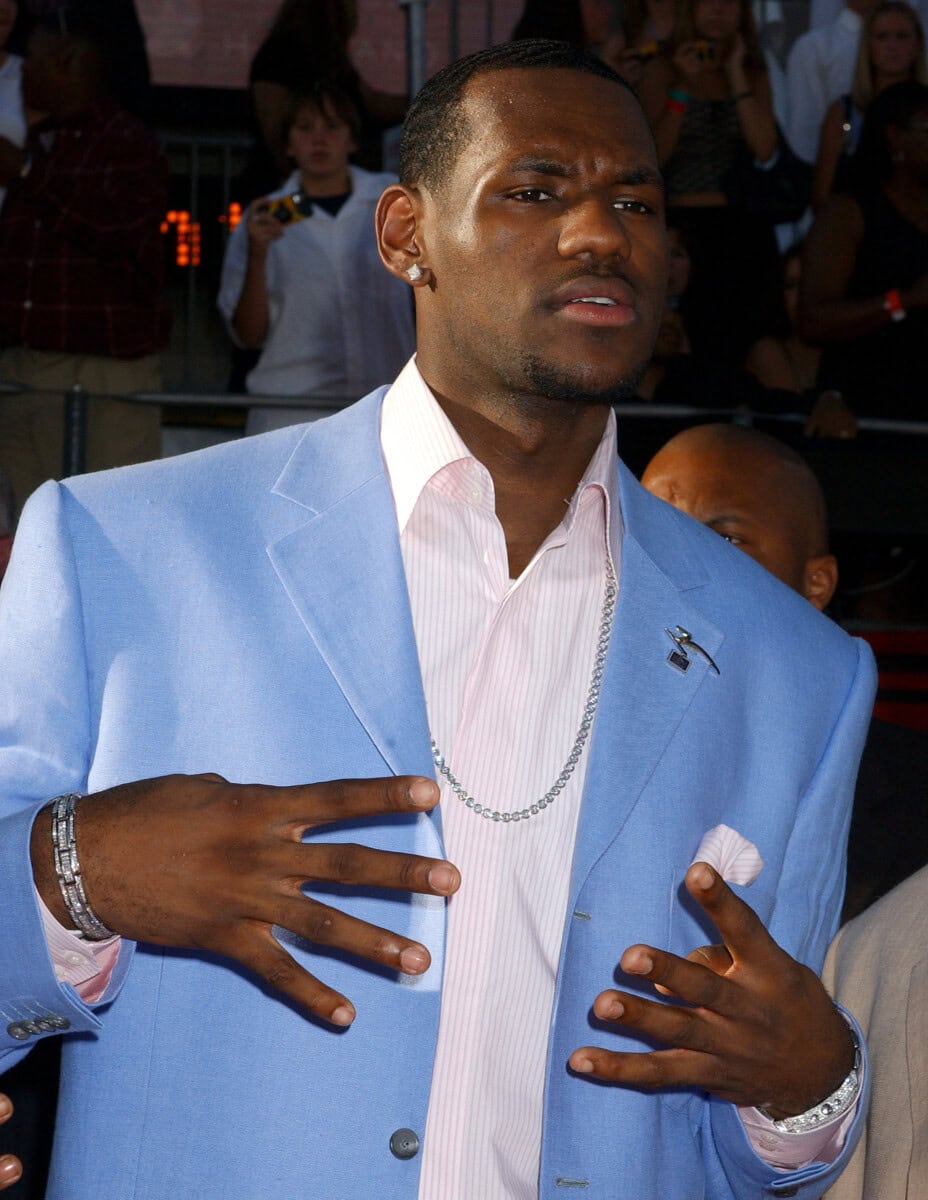
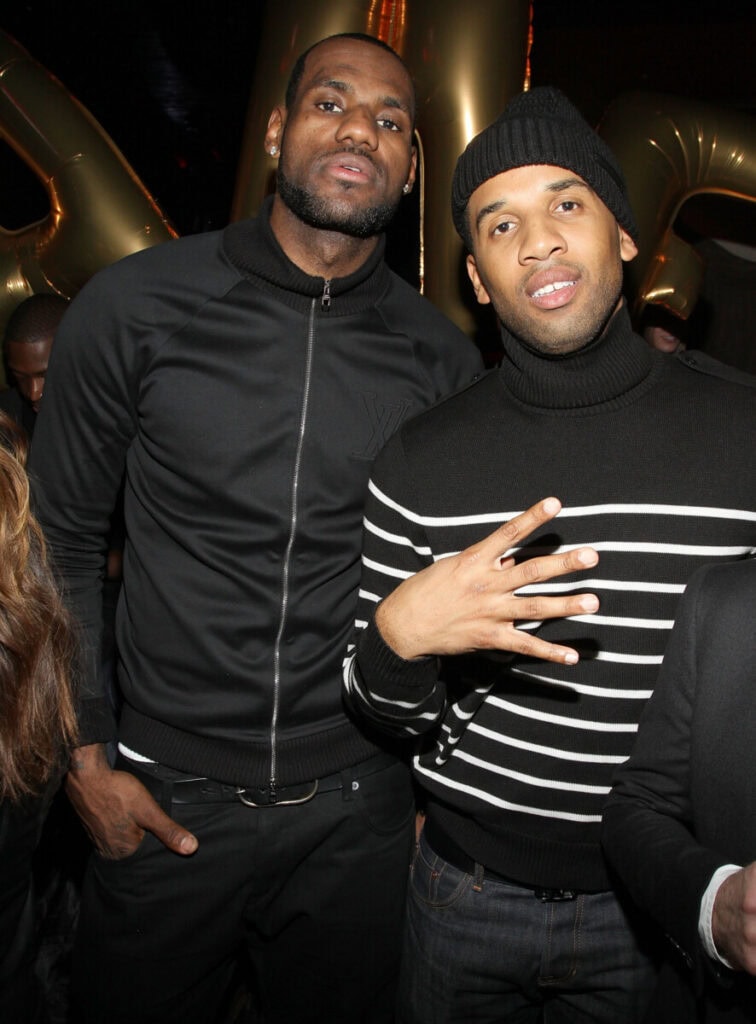
Over the course of the decade to follow, LeBron won MVP and NBA titles as anticipated. His Horsemen went on to build businesses, disrupt industries, and make millions for themselves and others.
Despite all the success and LeBron’s lifetime extension with the Swoosh, the infamous Air Force 1s remained a relic of the past.
Back in the Saddle
If you wanted a pair of “Four Horsemen” Air Force 1s in recent years, you better have a direct line to Maverick Carter or thousands of dollars to spend at Sotheby’s.
“I have a couple of original pairs,” Carter says. “PJ Tucker ended up with a pair of mine and I have no idea how. I might have left them in a house and someone took them and sold them. But of the few original pairs? People definitely ask for those for sure.”
Just as Lynn Merritt advocated for a young Maverick Carter inside the halls of Nike over 20 years ago, an opinion leader in the brand’s current sportswear division decided it was time to retell the story.
On April 27, 2023, the “Four Horsemen” Air Force 1 went from player exclusive to general public pair.
The style is now available online at Nike, offering access to a sought-after rarity and inspiration to a new generation.
“To see it releasing now? It’s a bit surreal, but awesome to show how we’re on a journey with everyone from where we’re from trying to get to a certain place,” says Carter.
Like a RocNation cap, the “Four Horsemen” Air Force 1 represents rising and ascending beyond the doubts of an industry.
“I hope they get them and enjoy them,” Carter says. “But honestly, I hope they realize what we stand for as the Four Horsemen.”
That’s believing in one self’s own entrepreneurial spirit enough to do the work. It’s learning the lessons and building a path for those to follow in their footsteps on the road to becoming leaders themselves.
“It’s what our company Springhill stands for — really being more than,” Carter says. “That feeling of empowerment of being more than people thought you could be. The shoe represents friendship, trust, staying together, and believing in one another.”
Although validation from corporations matters in making moves, love and loyalty from the frontman for the Four Horsemen set the stage.
“Ultimately it’s the idea of LeBron giving all of us a platform and the shoe really symbolizes that,” says Carter. “We’re from a community that a lot of us come from and it shows friendship and staying together.”

For four kids from Ohio, taking meetings with Fortune 500 companies at the same time their peers were taking prerequisites was uncharted and even unruly.
Navigating big businesses and lofty contracts, the Four Horsemen may have been cast as heels, but they serve as heroes to an entire generation of brand builders today.
“It was to symbolize sticking together,” says Carter. “And doing it our way.”